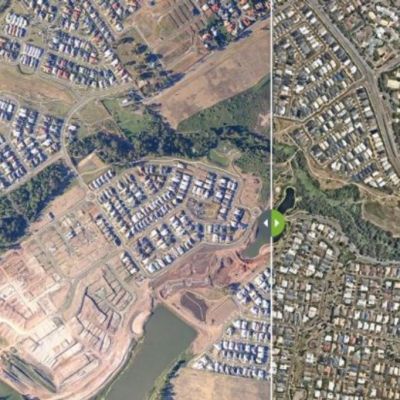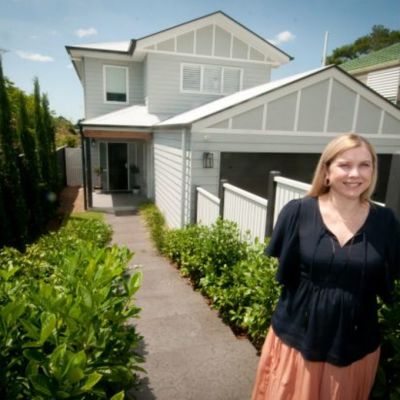Splitting a block in two: Things to consider before you invest

Five years ago, splitter blocks were all the rage with mum and dad investors out to make a quick, easy buck. But are they still worth the effort?
Only if you’re well briefed and ready to sign on the dotted line immediately, according to agents.
Splitter blocks are the single most sought after property on Tristan Rowland’s client list.
The Place Aspley agent describes the demand for them as “crazy obscene”.
“This type of listing is the most high demand out of any property. The wait lists are huge,” he says.
“If I get a listing, it sells within days. Or the day I list them. You have a look on the internet…they’re all under contract.”
Mr Rowlands cites 85 Fallon Street, Everton Park, as an example. A 1225 square-metre block, already on two titles but with the option to reconfigure to three titles, it created a frenzy when it was listed.
“It went nuts. I can’t give you an exact sale price as it’s not unconditional yet, but I can tell you it went for over $1 million,” he says.
“Considering a standard 405 square block sells for around $400,000 around here, the total re-sale price would be about $1.2 million for the three blocks.”
As great as that profit sounds, Mr Rowlands says there’s often too many costs involved in developing the land to make it worthwhile for mum and dad investors.
He says the money is now usually made in the build.
“A lot of the guys we have buying these splitter blocks are full-time builders. They build the new contemporary homes themselves – that’s where they make all their money because the demand for brand new contemporary homes is insatiable,” he says.
Anthony Hunt from Coronis Stafford says making money on splitter blocks is a lot harder than it used to be.
“The gloss has worn off splitter blocks over the past five years because the costs associated with them are pretty huge,” he says.
“It can cost $30,000 to $40,000 to remove the house. Add in all the associated development and services costs and it stacks up very quickly.”
Exactly how much it costs from start to finish depends on the individual circumstances of each block but Scott Entwistle, planning manager at Brisbane urban planning firm DTS, says generally, for a standard 810 square-metre block that’s getting split into two, you’ll spend $70,000 to $75,000 for the process.
“The biggest component of that is the infrastructure charges ($28,000) and then you have the cost of surveyors, town planners and the actual physical cost of installing the services,” he says.
“In a best case scenario, this process takes three months but sometimes that can blow out to double or triple that time.”
Mr Entwistle says the biggest mistake most people make is not looking at the services that are currently in place.
“The most common one we see is with the storm water. When you do a splitter block, it’s meant to drain to a lawful point of discharge, such as a stormwater pipe or the stormwater drain in the street,” he says.
“We frequently see mum and dad investors not taking that into consideration. They buy it, then they realise that the block slopes to the rear and they don’t have a lawful point of discharge.”
He said the sewer was another common stumbling block: “You need to get both lots to drain to a sewer. If you have a sewer that’s not located on your property and you can’t get it to a drain, that’s a problem.”
He says people are caught by surprise if they haven’t done their research into these issues.
“I can tell you that experienced block splitters and developers always do their due diligence first before touching or signing anything.”
Donni Luu from Raine & Horne Woolloongabba argues there’s still money to be made from splitter blocks, but only with careful planning and execution.
“The demand for these developments is exponential,” he says.
“The reason for that is because land is so scarce and contemporary homes are extremely popular.”
Mr Rowland says the biggest issue for those wanting to buy a splitter block is the competition from developers.
“You have to be so quick. Developers have got cash in their pocket and it can be impossible to compete with that,” he says.
“There’s still a lot of money to be made … we’re talking $80,000 in a week – but you’ve got to be prepared to move quickly and have your research already done.”
“My advice would be to talk to a town planner, have all your ducks in a row and talk to local agents about the fact you’re serious. Be ready to move.”
We recommend
States
Capital Cities
Capital Cities - Rentals
Popular Areas
Allhomes
More
- © 2025, CoStar Group Inc.









